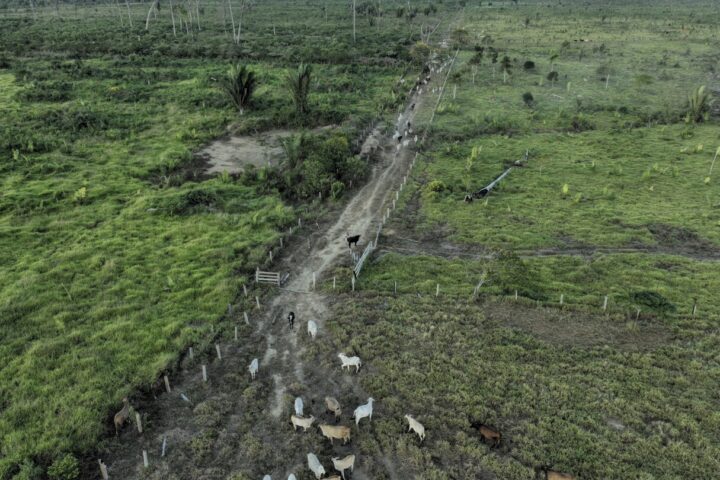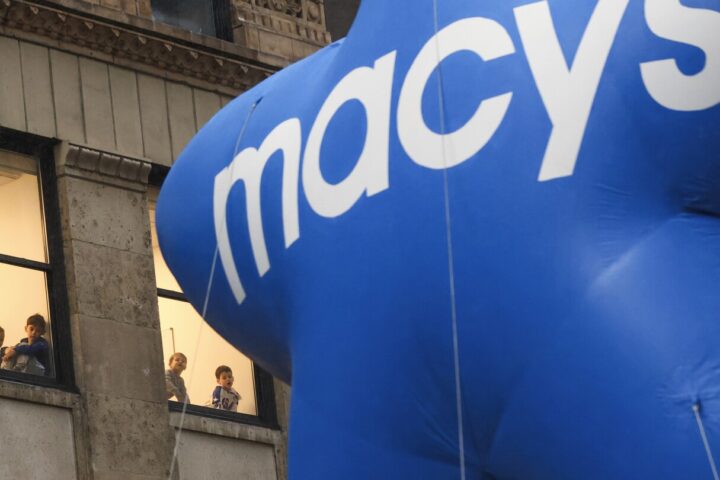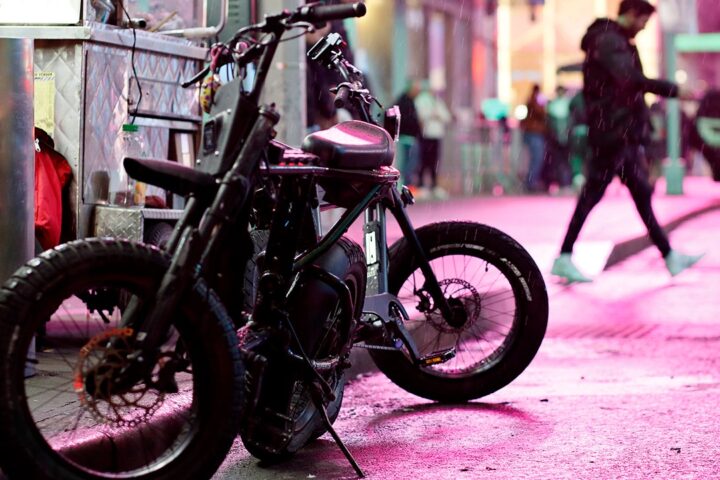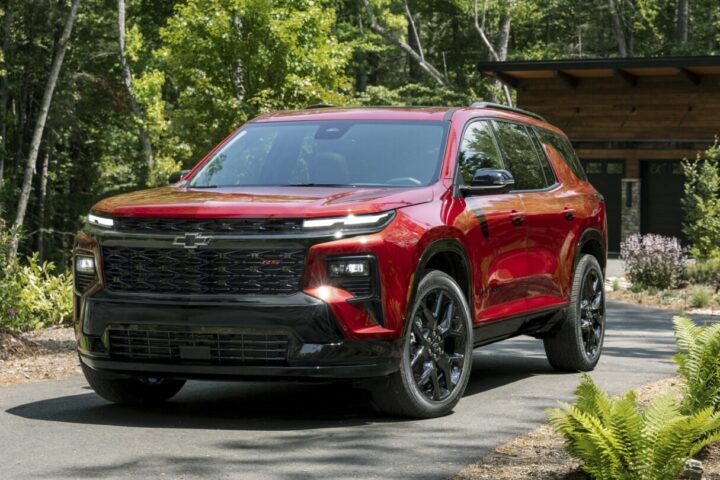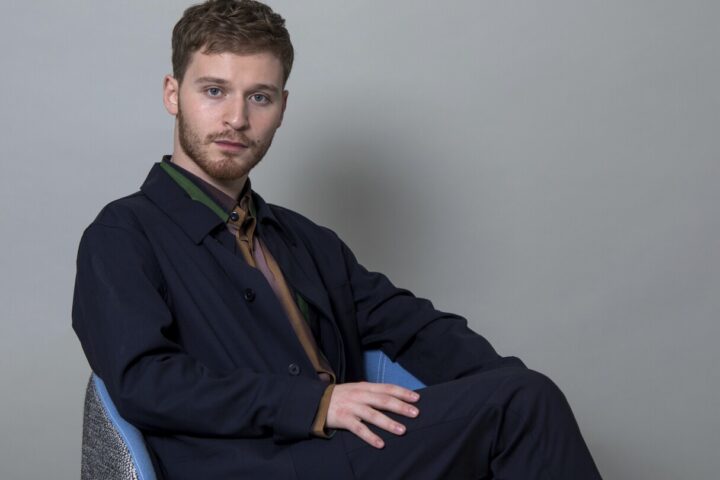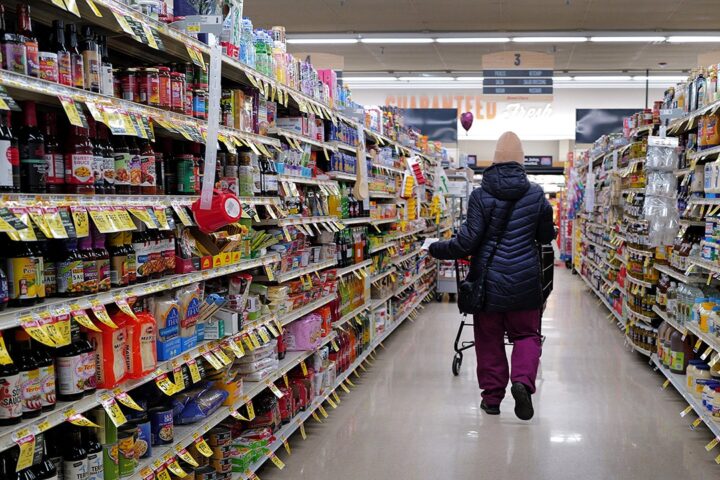Disney brought a groundbreaking attraction to Saudi capital Riyadh (Photo by Sam Bagnall/LAT Images)
Building blockbuster theme parks isn’t for the faint-hearted. It typically takes tens of thousands of workers years to build them and costs billions of Dollars. Casting a powerful spell requires a backer with deep pockets and one of Disney’s latest partners has the deepest of them all.
Disney essentially invented theme parks as we know them. The media giant didn’t just develop the format for modern-day theme parks with the opening of Disneyland in 1955, it also subsequently introduced innovations which have since become commonplace across the industry.
Queue-cutting passes, wireless payment devices and 360 degree screens all made their debut in Disney theme parks. In November last year it introduced a new innovation which has the power to trump them all.
Disney’s theme parks are famous for their extravagance. They are home to man-made mountains, rides populated with robotic characters and fireworks displays at the end of every day. So when Saudi Arabia’s General Entertainment Authority offered the media giant a spot on the roster of its capital city’s annual Riyadh Season last year it didn’t do it by halves.
Instead of setting up a booth at the festival, Disney built a 20,000 square meter mini theme park featuring five lands promoting some of its most popular movies. Saying it was big doesn’t do it justice – the complex was so sprawling that it had its own map.
It was the first time that Disney had built a complex on this scale and it was also a return to a category that Disney had largely avoided for nearly a decade.
Called Disney: The Castle, the complex was located just six miles outside central Riyadh making it a prime example of Location Based Entertainment (LBE). In simple terms, LBE involves operators bringing their venues to residents by building them in densely-populated urban areas rather than forcing residents to travel to them out of town as is usually the case.
Disney first experimented with LBE venues in 1998 with the opening of DisneyQuest in Orlando, Florida. The five-story windowless building housed arcade games, virtual reality simulators and midway games themed to Disney theme park rides. A second location opened in Chicago in 1999 and Disney reportedly planned to roll out as many as 30 other locations worldwide over the following years. It was not to be.
Lower than expected visitor numbers led to the closure of the Chicago venue after just two years whilst its counterpart in Orlando continued until 2017 when it was converted into an NBA-themed attraction. That too closed during the pandemic and was recently taken over by a pop-up store selling products from Harry Styles’ lifestyle brand Pleasing. Disney had no such worries in Riyadh.
Disney has tremendous untapped potential in the Middle East as locals have a long tradition of visiting its parks in Paris and the United States. Indeed, one of Saudi Arabia’s wealthiest residents, Prince Alwaleed, repeatedly bailed out Disneyland Paris over the past 30 years as we regularly reported at the time.
Furthermore, according to Deadline, Disney’s live action remake of Aladdin is the highest-grossing release of all-time across the Middle East and it is now one of the few regions worldwide where new Disney Stores are opening as we have also reported. Disney capitalized on this in Riyadh by using every trick in its spell book to create undoubtedly the most spellbinding LBE venue in history.
Inside each of its five lands were attractions incorporating the same kind of shows and cutting-edge interactive digital characters found in Disney’s theme parks. Dancers clad in colorful intricately-detailed costumes gave Broadway-caliber performances and projection mapped shows played outside.
One of the lands featured a life-size replica of the traditional Casa Madrigal South American house from 2021 Oscar-winner Encanto. This hasn’t even made its way into Disney’s theme parks in the US yet and isn’t expected to open in Orlando until 2027.
The attention to detail in its Riyadh incarnation was astounding. Weathered bricks could be seen behind the cracked plaster in the wall of the house and wooden beams supported the roof which appeared to be formed from terracotta tiles. Colorful creeping plants covered the ornate balconies and the windows were hidden behind wooden shutters.
During one live music show, the shutters swung open to reveal silhouettes of characters from the film using a similar system to one which recently debuted at Disney’s Magic Kingdom park in Orlando. Another show saw pin-sharp scenes of fiestas and Aztec celebrations beamed onto the building synchronised with catchy tunes from the film.
Towering over the lands was a 30 meter-high replica of Cinderella’s Castle which is the centerpiece of several Disney parks. It made history as it was the first time a Disney castle had appeared in the Middle East and it was far from a Mickey Mouse structure.
Just 21 meters shorter than the castle at Disneyland Paris, its towers, battlements and balustrades were in the same place as its counterpart in the Magic Kingdom. It even shared its color scheme with cream walls, blue turrets and golden trimmings.
Guests had a chance to let it go at the foot of the castle where sweeping screens showed scenes from popular Disney movies which played in time to synchronised dance shows on a stage in front of them. Just like in the theme parks at Christmas, fake snow (actually soap suds) rained down on the crowd during the winter-themed songs whilst spotlights illuminated the castle at night when it formed the backdrop to spectacular fireworks displays.
The complex was open until February this year so not only did it have to be designed from scratch for the festival but it also had to be capable of being disassembled. It took more than the wave of a magic wand to pull this off.
“This is a groundbreaking project built on the shoulders of so many giants,” said Darryl Franklin, Disney Concerts’ vice president of business affairs and business development.
He added that two people played pivotal roles in creating the concept of the complex. One was Chip McLean, Disney Concerts’ worldwide general manager. McLean is a supremely-talented 30-year veteran of the music industry who has an eye for translating it into innovative live experiences. He described Disney: The Castle as “the result of the creativity and collaboration of so many talented people working together to make our shared vision a reality.” It is no exaggeration.
Three key companies worked with Disney and they were all leaders in their fields. One was Balich Wonder Studio, a live event producer which has been behind the highest number of Olympic Ceremonies.
Balich was supported by TML Enterprises which specialises in musicals and has worked on productions in more than 450 cities across 45 countries. Founded in 1998 by industry heavyweight Tim Lawson, it produced the Melbourne season of Fiddler on the Roof starring the late Topol and followed this up with The Rocky Horror Show headlined by legendary impresario Richard O’Brien. TML is is still going strong and, in addition to working on Disney: The Castle, it is also developing The Iron Throne, a prequel to Game of Thrones, with author George RR Martin serving as executive producer.
The third linchpin was British company Propeller Live, which operates at the cutting-edge of immersive entertainment. Franklin credits Propeller Live’s creative director Max Painter as creating the concept for Disney: The Castle alongside McLean. “Disney: The Castle began as an idea to bring the magic of Disney to a global audience as a groundbreaking immersive musical journey with the Castle as its iconic centerpiece,” explained Painter.
Propeller Live’s website gives further insight into the origins of this groundbreaking attraction and the roles that each of the parties played.
“Disney: The Castle started as our original idea; to bring the magic of Disney to a global audience as a stunning immersive world with the Disney Castle as the show’s iconic centrepiece. We worked with Disney Concerts to develop interactive musical experiences as anchor activations based on the marquee properties of Lion King, Frozen, Encanto, Aladdin and The Little Mermaid and our sister company; Imaginer produced 3D concept designs for key elements including the design for an all-new adaptation of The Disney Castle.
“Business and executive development was provided by Tim Lawson and Toby Simkin at TML. Balich Wonder Studio joined the project as partner-producers and developed the working concepts providing procurement, production design, engineering, project management and operations using their extensive production teams.”
One of them was Samuel Orme, who was director of Balich’s creative department and executive producer. Orme’s track record in theatrical entertainment is as strong as it comes. He cut his teeth at the landmark House of Dancing Water show in Macau and went on to work for theatre legends Andrew Lloyd Webber and Cameron Mackintosh as well as circus pioneers Cirque du Soleil.
Orme said that Disney: The Castle “was made possible by an extraordinary team of 400+ professionals alongside many trusted suppliers who poured their time, hearts, and good humour into delivering something that was beyond ambitious.” No stone was left unturned.
The shops in the complex sold limited edition Disney merchandise and the restaurants were themed. Even the photo opportunities weren’t standard. One was set in a wooden-looking sailing ship from fan-favorite Tangled and seemed to be setting sail as orange Chinese lanterns appeared to float above.
Likewise, the Lion King area allowed children to join in with the drums as Broadway-caliber actors played tunes from the Lion King in front of scenes from the movie shown on screens seamlessly set into the structure. The Little Mermaid land was equally well thought-through as it allowed kids to play instruments that looked like they had come from the ocean floor.
The area themed to hit animated movie series Frozen featured an indoor pavilion filled with a forest of stylized trees dripping with illuminated icicles. They were set against the backdrop of a sweeping screen which played scenes from the movies but it didn’t stop there. The digital leaves beamed onto the floor parted as guests walked by whilst ice sculptures were revealed as visitors brushed their feet over digital snow scenes.
The Aladdin land set the scene before guests even stepped into it as the entrance was formed from a huge tiger’s head just like the doorway to the cave of wonders in the 1992 animated classic. Inside, guests could find intricate rockwork strewn with make-believe treasure and chests. Hidden inside one was a magical lamp and when it was found by the performer playing Aladdin himself it summoned up a 7 meter-high computer generated genie which appeared on the wraparound screen. It didn’t stop there.
Anyone who has seen the Turtle Talk show at Disney’s parks in the US will have found the performance familiar. Turtle Talk sees a hidden performer voicing a digital doppelganger of the Finding Nemo character which responds on a screen to live questions from guests. The genie in Riyadh too was interactive but it wasn’t thanks to sorcery.
Many of the enchanting effects were down to British video and projection design firm Mesmer. It put a team of ten people on Riyadh’s Disney complex including animators, 3D modellers and video technicians. Mesmer’s team have more than 30 years of experience in live events and have designed Olivier and Tony award-winning shows as well as several productions for Disneyland Paris.
Mesmer’s creative director Ian William Galloway worked on Frozen: A Musical Invitation and Mickey and the Magician, probably Disney’s most breathtaking stage show. The celebration of Disney songs sees performers filling the stage to belt out classics like ‘Be Our Guest’ and the ‘Circle of Life’ which is the cue for an invasion of the same giant origami-style animals from the Lion King stage show. Entering from hidden doors they fill the aisles whilst a giant savannah rock is moved on stage and the starry backdrop becomes a setting sun through high-tech projections. Amateur dramatics it is not.
Just when you think it couldn’t surprise any more it does. The magic in the show’s name is far from a frivolity as it features tricks created by Paul Kieve who consulted on the Harry Potter and the Prisoner of Azkaban movie. In fact Kieve is the only real life magician who has performed magic in the Harry Potter films with his handiwork including floating spheres and a self-folding map.
The ornate Mickey and the Magician set hides secrets such as a broomstick which appears to brush on its own and a lifelike moving model of Lumière, the talking candlestick from Beauty and the Beast. Somehow Cinderella disappears when she is wrapped in a carpet and a levitating box seems to contain a six foot signing and dancing genie. He is an actor at Disneyland Paris but a computer-generated character in Riyadh.
As well as handling overall technical specification and supervision of the site-wide video systems for Disney: The Castle, Mesmer provided all content design, character design, software development and animation as well as the specialist media servers required for the interactive attractions. Its website reveals that the floor effects in the Frozen land were created by Notch software systems receiving data from light detection and ranging (LiDAR) scanners which use lasers pinging off objects and returning to the source measuring the distance by the time the pulse takes to travel.
In contrast, the genie in the Aladdin land was created with a combination of face-tracking, volumetric body capture and motion capture gloves which controlled an Unreal Engine videogame character in such a way that actors could be changed in only a minute. It allowed the event to run continuously throughout the operating time of the complex which was from 5pm to midnight on weekdays and 1.30am at weekends.
Orme said that by the time the curtain came down on the complex in February it had “performed 2800 musical experiences”. Tickets ranged in price from $33 (SAR125) to $93 (SAR350) and according to Cundall, the engineering consultancy behind the complex, it was “visited by more than 120,000 people.”
Cundall’s structural engineers prepared the basis of design which was issued to all suppliers working on the project before its team in Riyadh provided local sign off. “This was another successful collaboration with Balich Wonder Studio and their suppliers. We are proud to have worked with our colleagues in Riyadh to play a part in this fast-paced and dynamic project,” said Konstantinos Agrafiotis, Cundall’s senior structural engineer.
It sets a high barrier for Disney’s rival Universal to beat with its horror-themed LBE venue which is due to open in Las Vegas next year. However, that’s not the biggest reason why the Riyadh venue could be a dream ticket for Disney.
Full-size theme parks can’t easily be moved so operators have to be sure that they have got the right location before building commences. Local appetite was previously tested by market research and the booking levels of Disney cruises which sail there but the castle changes all that as it can literally pop in new markets to gauge the level of local interest.
Although there are 14 Disney parks in six resorts around the world, its internal research shows that “there is still enormous untapped potential for reaching more consumers.” Specifically, “there is an addressable market of more than 700 million people with high Disney affinity it has yet to reach with its parks. In fact, for every one guest who visits a Disney park, there are more than ten people with Disney affinity who do not visit the parks.”
Last year, Disney parks chief Josh D’Amaro dismissed the idea of following Universal’s lead and building mini-parks in the US. Instead, he said that running a cruise ship in a new region “gives you some indication of how guests are receiving the brand and what the opportunities might be going forward.” Disney: The Castle can fulfil the same objective in locations around the world and it may only be a matter of time before Disney deepens its roots in one of them.
In 2018, Disney’s chief executive Bob Iger told analysts there was “an inevitability” to Disney building a seventh theme park resort in China or another country, although he cautioned that no plans were on the horizon. “We’re going to look,” he added and it didn’t fall on deaf ears.
Soon afterwards, Iger admitted that Saudi Arabia’s Crown Prince Mohammed bin Salman “made an impassioned plea to me to consider building Disneyland in Saudi Arabia, and I listened with curiosity and somewhat of an open mind.” He added that “I ended up saying that I would visit and see for myself…Whether we grow or not there, I don’t know, but I’ll go.”
Although it hasn’t yet led to the development of a permanent theme park in Saudi Arabia, the country hosted the debut of Disney: The Castle. There is good reason for this.
Saudi Arabia is reportedly poised for a 105% surge in average wealth per person in the next 10 years, jumping from the current $54,000, according to Henley & Partners’ BRICS Wealth Report. It added that the number of millionaires in Saudi Arabia has surged 32% since 2013 to a staggering 58,300, making them an attractive target market for Disney’s theme parks.
Saudi Arabia is doing all it can to give its locals enough to visit in their home country. It is in the process of building the world’s first theme park based on the manga series Dragon Ball as well as a Six Flags theme park containing the world’s fastest and tallest roller coaster. Next door will be one of the world’s biggest water parks which will be home to the world’s first underwater theme park ride. It has been designed by SottoStudios, run by Disney veteran Eddie Sotto, one of the world’s leading theme park designers. His former employer Disney may yet return to the region.
Balich Wonder Studio co-founder and group executive president Gianmaria Serra described Disney: The Castle as setting “a new benchmark for live music events across the world” and added that developing it wasn’t a walk in the park.
“It was an incredible challenge to bring this important IP to life with different immersive installations, concerts, and music,” he said in an interview with industry website Blooloop earlier this year. The pavilions were designed as temporary demountable structures so they can be moved to different locations around the world following their debut in Saudi Arabia. “Now we’re looking to bring it back to the country and tour it worldwide,” added Serra. That really would be a happy ending.

